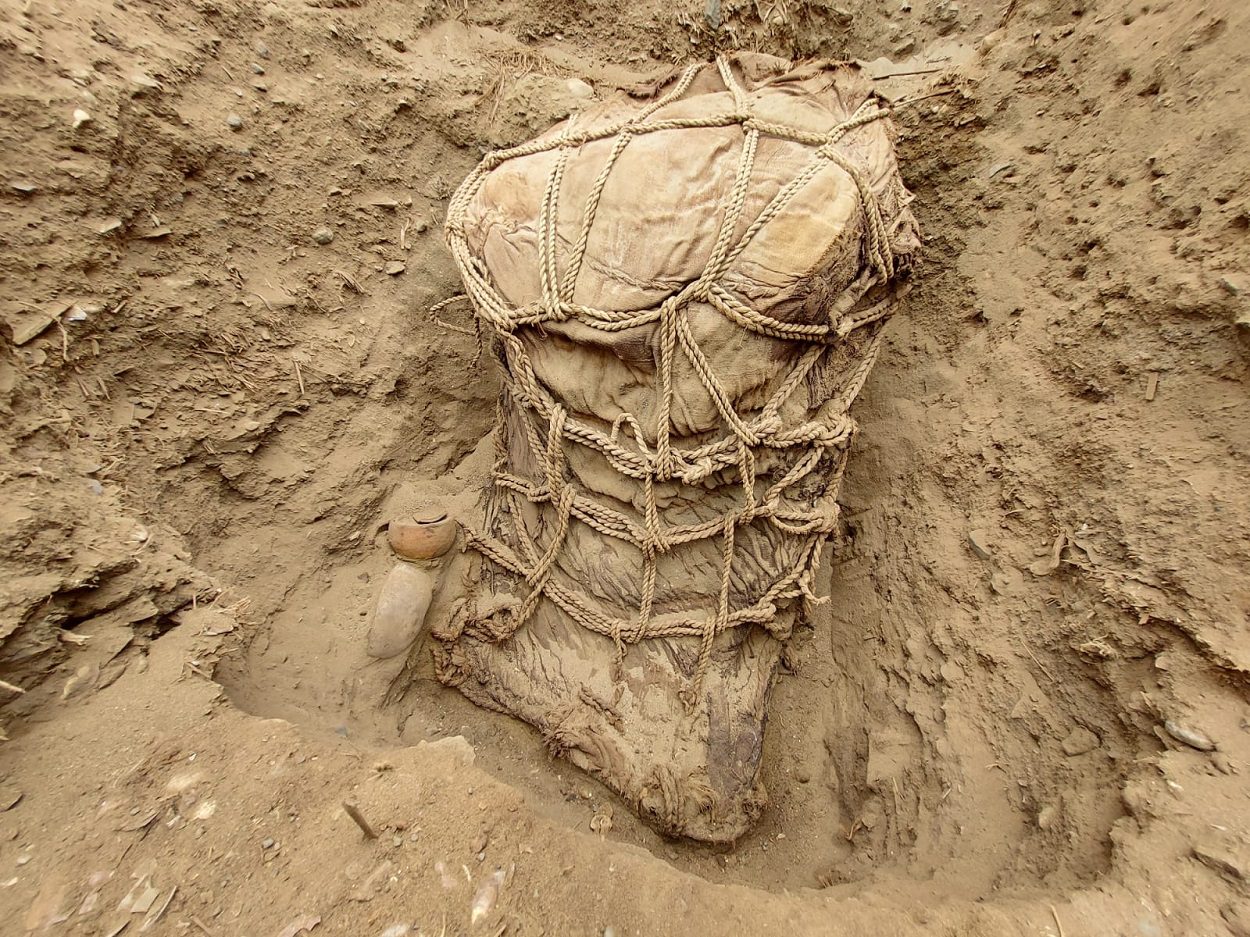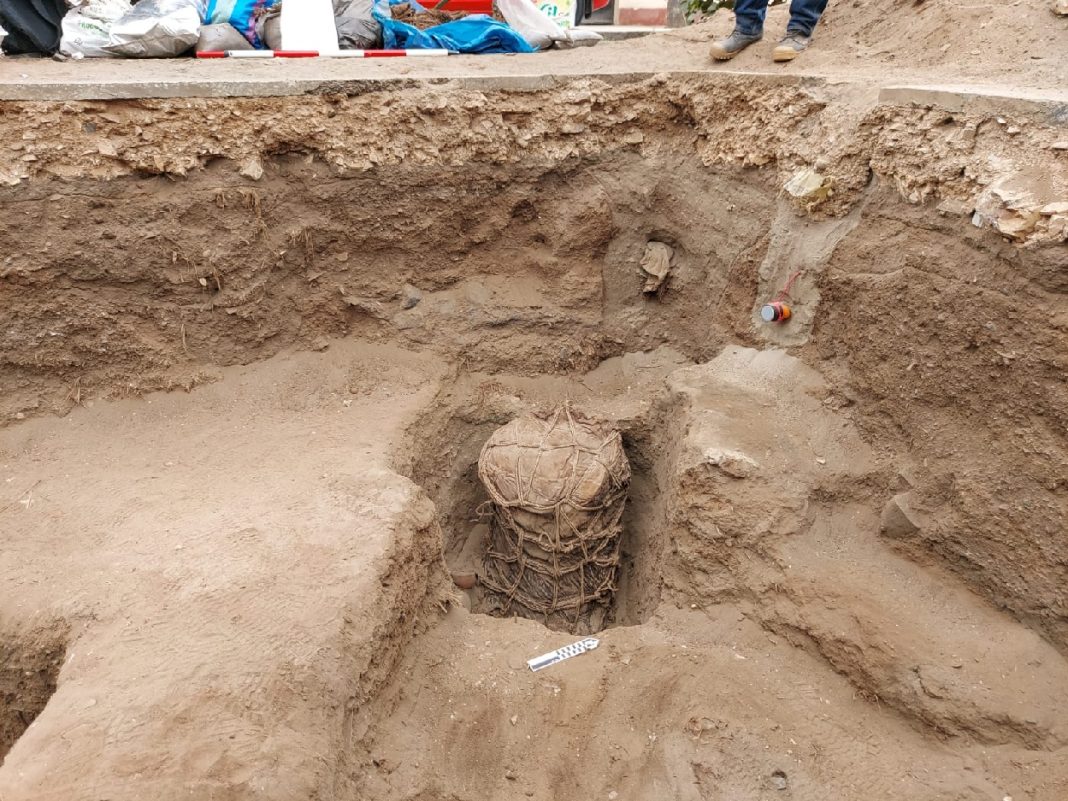Around the 11th century, the Ichma emerged in the valleys of the Lurin and Rimac Rivers to the south of Lima. This pre-Inca culture endured until the 1469s when they were assimilated into the Inca Empire.

It is thought that the Ichma were an Aymara-speaking population that settled in the coastal regions close to Lima in the aftermath of the Wari empire’s decline. During this period, multiple tiny kingdoms and alliances were established, with the Chancay Culture ruling the northern part of Lima and the Ichma Culture dominating the southern part.
The Ichma had their capital, previously known as Ishma, called Pachacamac. There, they erected at least 16 pyramids and worshipped the deity Pacha Kamaq, the god of creation.
Calidda company workers made the archaeologists aware of the antique tomb when they were constructing a new pipeline. This sepulcher dated back 500 years to the end of the Ichma period, and the body was placed in a hole, covered with plant-fiber blankets, and bound together with ropes tied in a geometric design.
At the burial site, there are several items meant to be used as funerary gifts, like pottery and containers for a mate — a type of herbal beverage made from dried leaves of the yerba mate (Ilex paraguariensis) plant, which many cultures in the Americas steep in hot water to make a caffeine-rich drink.

Caravedo, a representative of Calidda, stated that their company has assigned archaeologists to monitor their Gas Natural installation projects to ensure the preservation of the city’s archaeological landmarks. Additionally, they collaborate with the Ministry of Culture to rescue and protect any discoveries.



